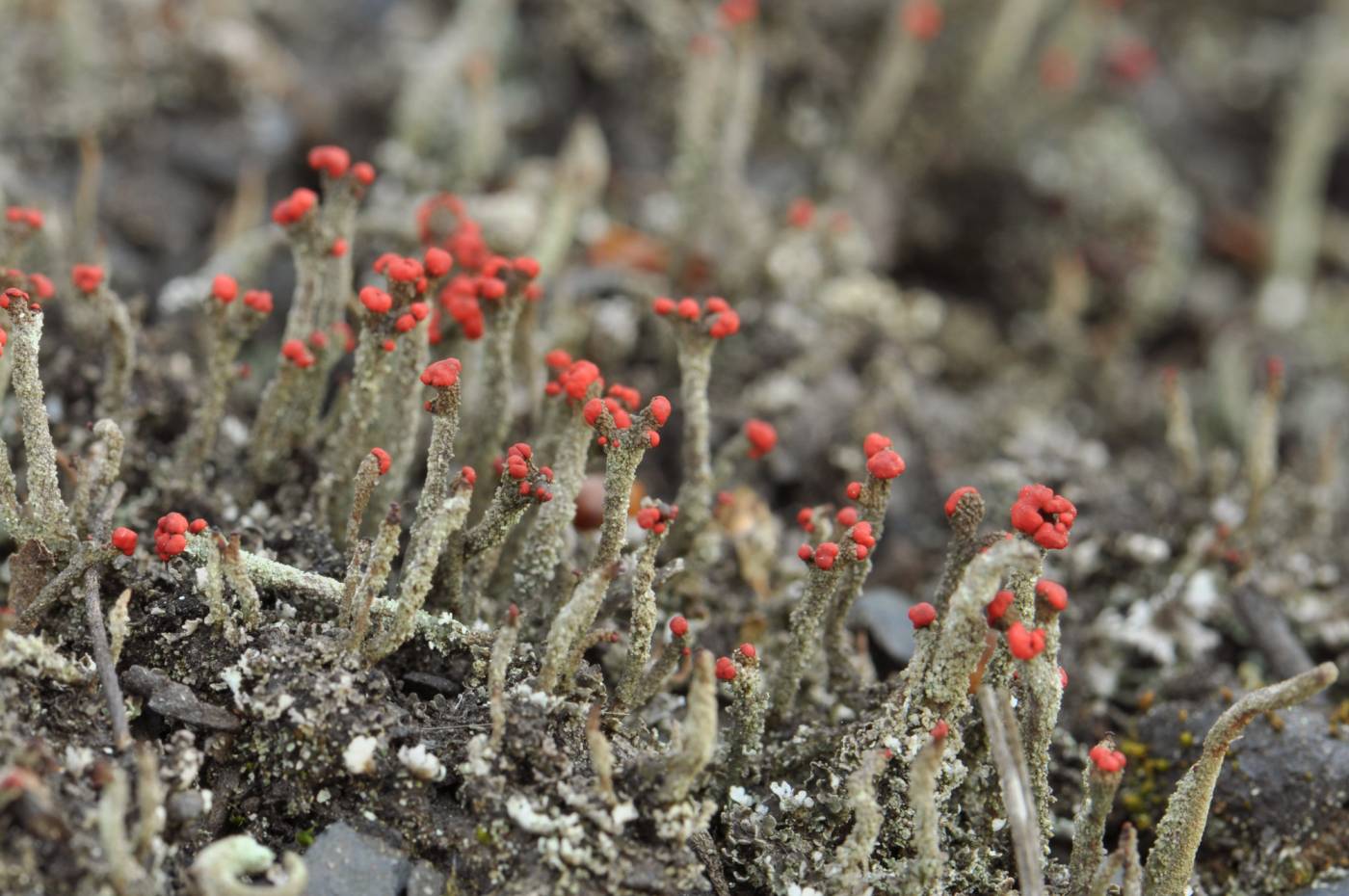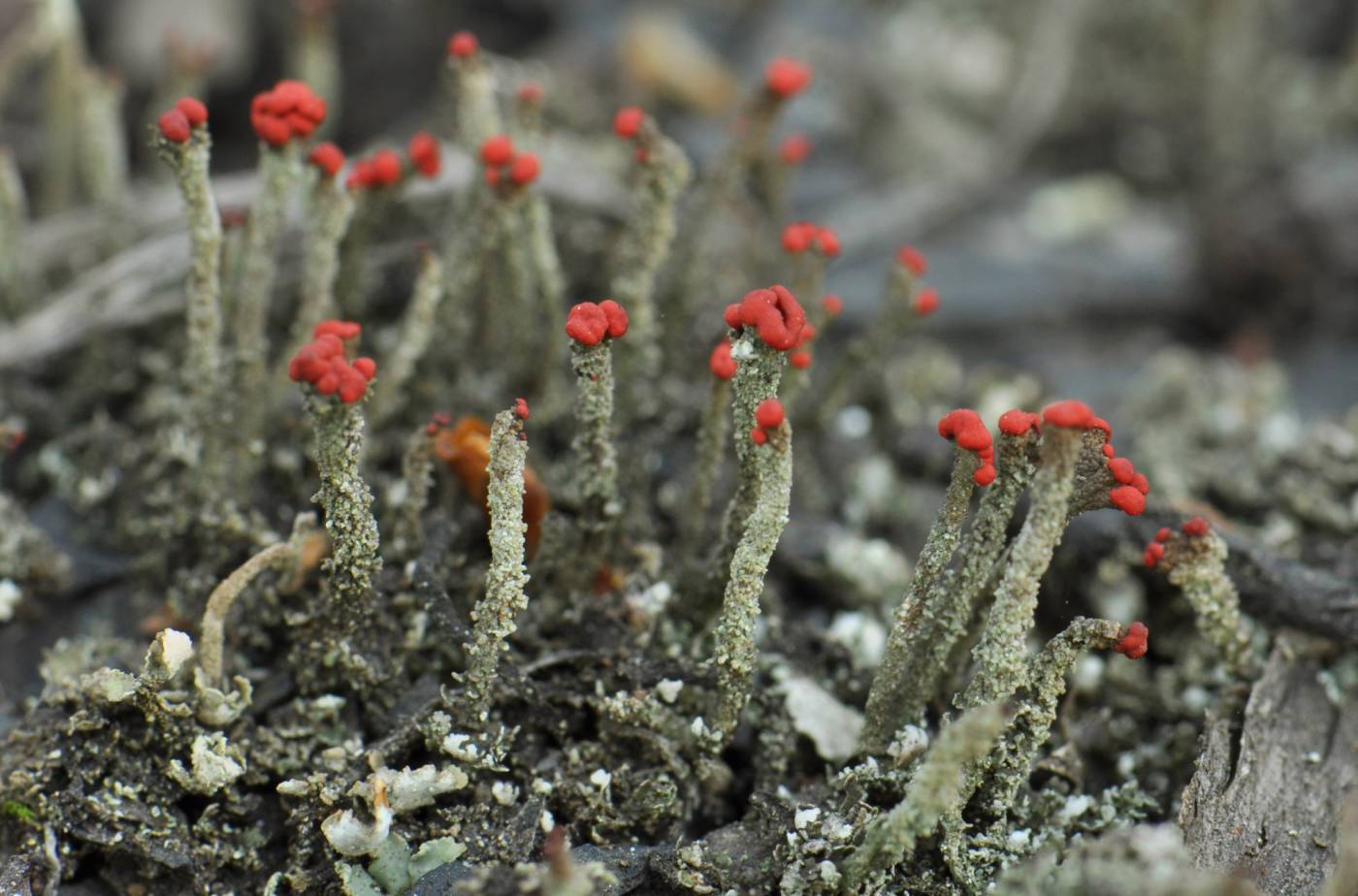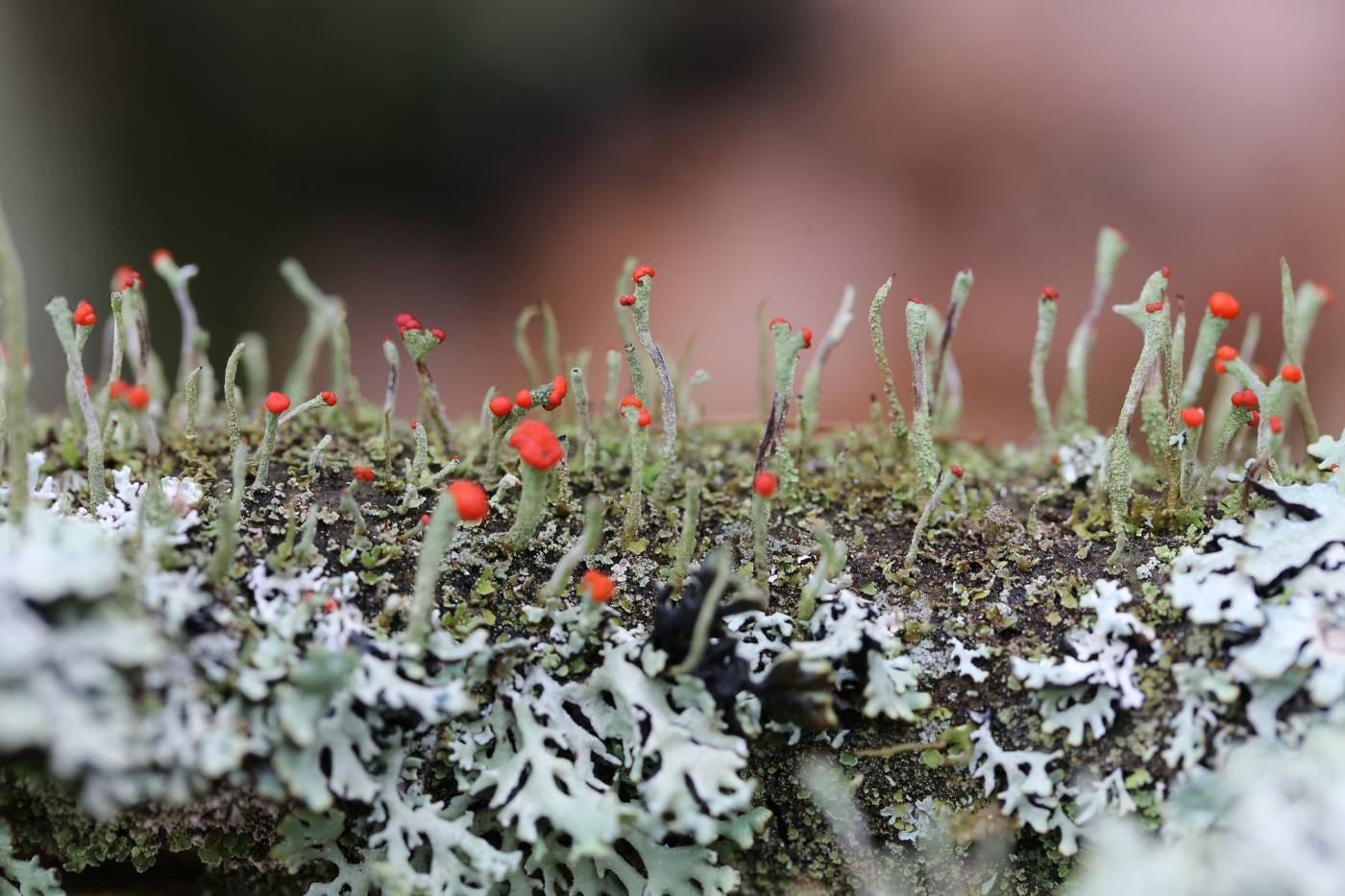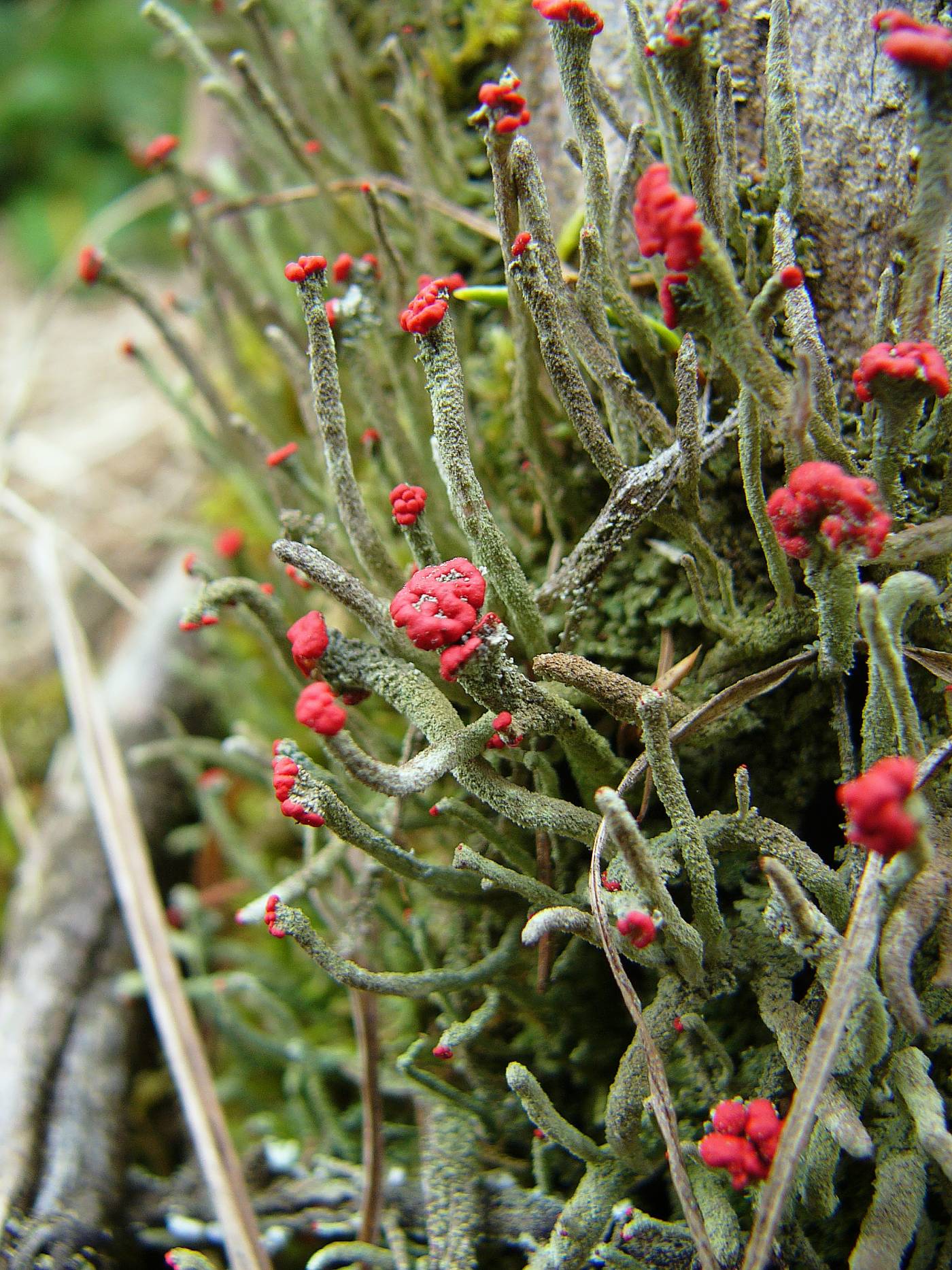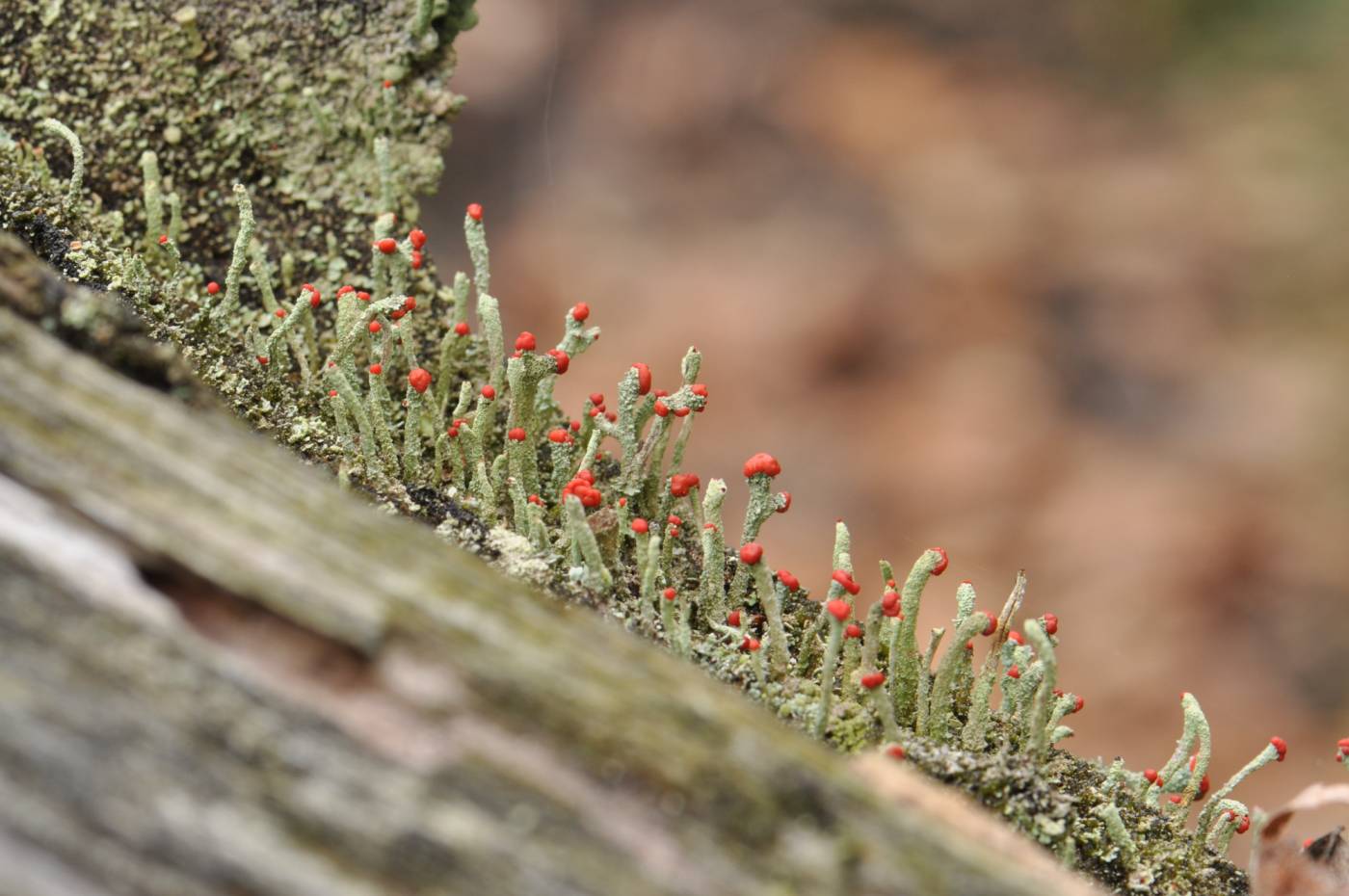Cladonia macilenta is probably the most common red-fruited Cladonia species in central Europe. It forms small ascyphose podetia covered with soredia. It contains several chemical compounds in varying combinations. Barbatic acid is almost constant, most commonly accessorized by thamnolic and/or didymic acid. In the past, two taxa were distinguished based on spot reactions, referring to the thamnolic acid content: C. bacillaris (K- and Pd-) and C. macilenta s. str. (K+ bright yellow and Pd+ orange).
The lichen typically grows on decaying wood but sometimes also on tree bases, acidic soil, humus and rocks. It is common in most of Europe. In the Czech Republic, it occurs in both forest and open habitats from lowlands to mountains.
Forms with conspicuously high and usually branched podetia are sometimes found in the Czech Republic. They resemble C. rei at the first sight, contain barbatic and didymic acids and might represent a separate taxon.
The brown-fruited C. coniocraea may be morphologically indistinguishable when sterile, but the two species are reliably distinguished based on secondary metabolites. It might be difficult to distinguish C. macilenta from C. floerkeana. The latter usually has granular and partly corticate podetia. However, richly fertile podetia of C. macilenta might sometimes develop the same structures. In humid mountain forests and sandstone rock formations, it might be confused with poorly developed forms of C. polydactyla, a species rather associated with cold climate.
taxonomic classification:Ascomycota → Lecanoromycetes → Lecanorales → Cladoniaceae → Cladonia
most frequented synonyms:Cladonia bacillarisRed List (Liška & Palice 2010):LC – least concern
Occurrence in the Czech Republic
All records: 1271, confirmed 736. One click on a selected square displays particular record(s), including their source(s).
